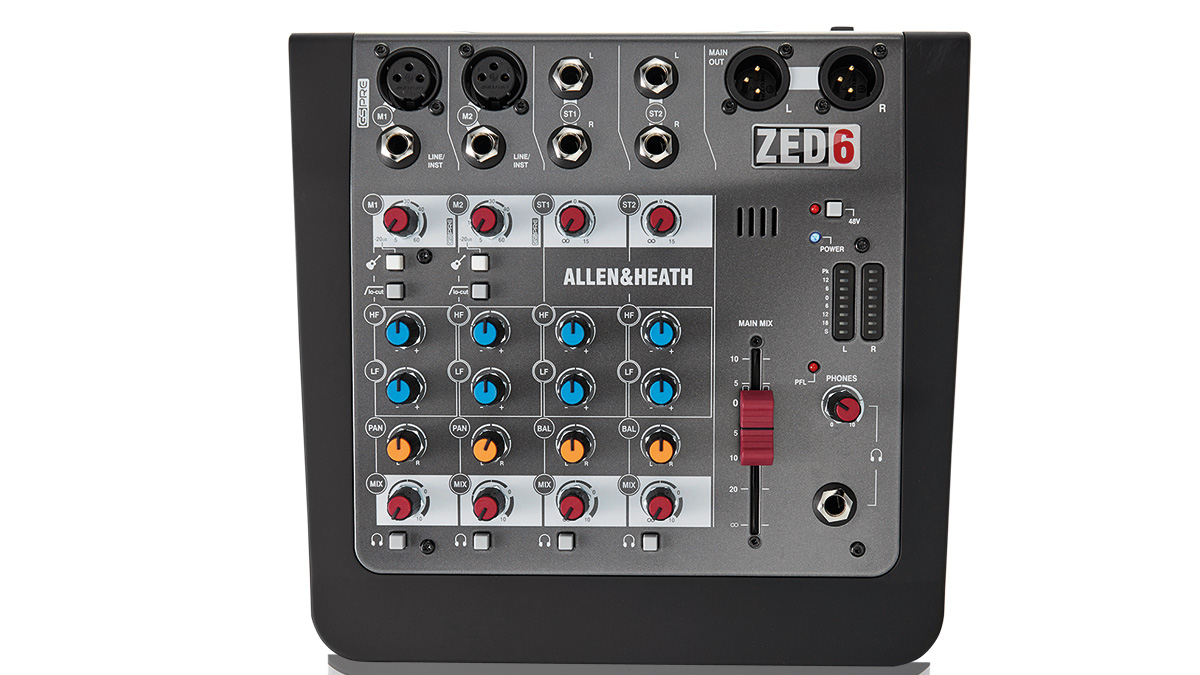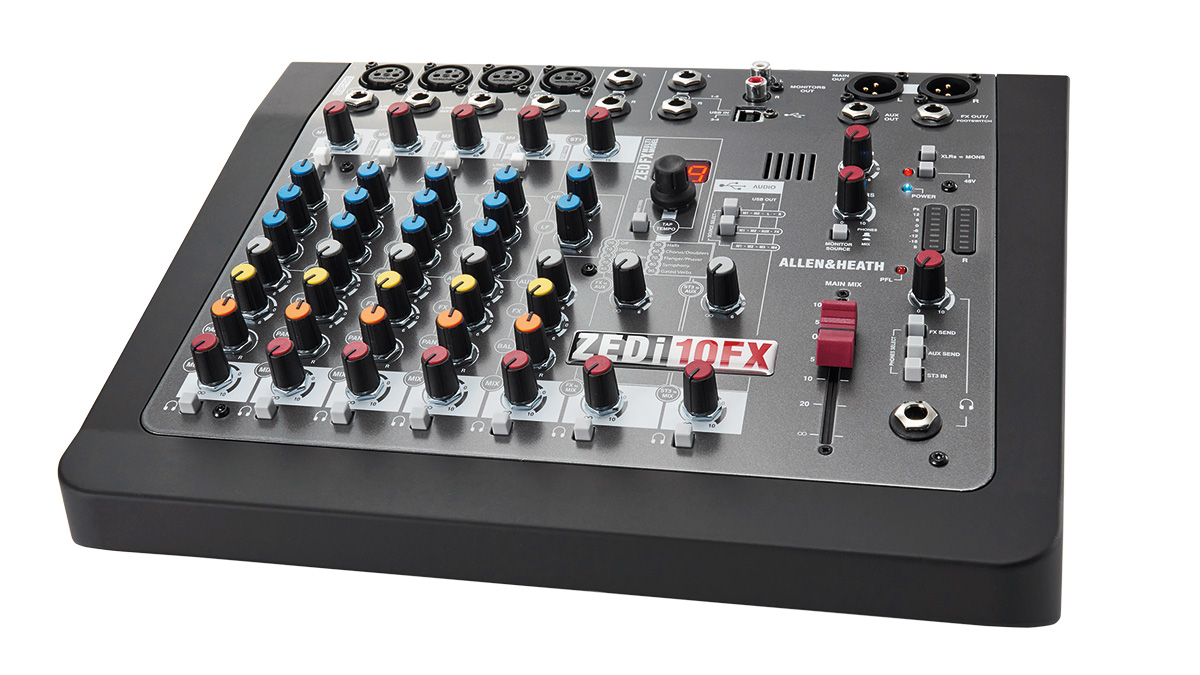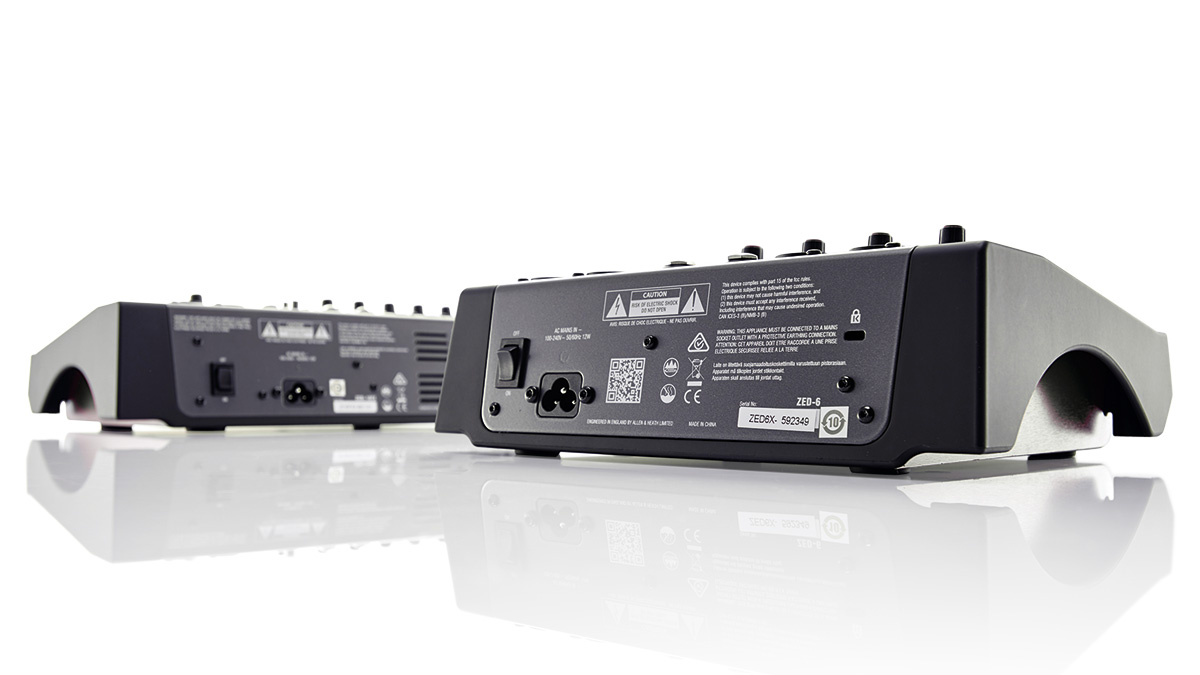MusicRadar Verdict
If you are looking for a compact and portable mixer, the ZED series are built tough, excellent value and come in a variety of formats.
Pros
- +
These are fantastic mixers for the price.
- +
Excellent feature set.
- +
Onboard effects are quality.
Cons
- -
Older models were more aesthetically pleasing.
MusicRadar's got your back

Allen & Heath ZED6 Mixer

Allen & Heath ZEDi10 Mixer

Allen & Heath ZED Mixers
It wasn't so long ago that your only serious option for low-cost, low-noise, durable mixers for recording live performances and studio recordings was the Mackie 1202VLZ (mk1).
But it has all changed these days, and Allen & Heath's ZEDs have played a big role in blowing the market wide open.
- Want the very best? Take a look at the best home studio mixers
- So you want to be a podcaster? Have a gander at the best podcast mixers
- The best consoles for live mixing: gig-ready live mixing boards
You can use the ZEDs for all manner of purposes, from powering PA to 32 channel four buss options. The ZED 6 and ZEDi 8 mixers represent the small but durable upgrades Allen & Heath to the range, and they are joined here by their acclaimed ZED 10, which similarly has been revised.
You will find all of them in their regular and FX formats, with the 8 and 10 featuring a built-in 24-bit 96kHz USB audio interface – 2 in, 2 out and 4 in, 4 out, respectively.
Here we will be taking a look at the ZEDi-10FX and ZED 6 options, but the major components are the same across the series.
ZEDi-10FX offers up four mono mic/line channels, each with phantom power. You also have a trio of stereo inputs and onboard FX. There are separate balanced/unbalanced TRS and XLR inputs on the four mono channels. Stereo inputs come via TRS jacks.
The is ample headroom in the GSPre preamps – in the silent stakes, they could go toe to toe with a dropped pin. The official word from Allen & Heath HQ is that they were "developed from the revered GS-R24" desk. Well, they sound very nice on everything that we have put through them – even our own voice.
Want all the hottest music and gear news, reviews, deals, features and more, direct to your inbox? Sign up here.
Ditching EMOs
The first two channels have mode dedicated for guitar, with high impedance DI inputs. That means less kit to carry about on the road and less chance of your precious EMO 520 going missing on the job.
On the next two channels you will find a Line/Pad button that drops the mic input level 20dB. We've also got a low-cut button (100Hz) here that works across all four channels.
Most of the controls here are knobs. With 5-60dB of gain, the mono channels have more than enough juice for sensible purposes, and there are controls for balance, mix level, FX-send, auxiliary send plus a 3-band EQ.
The original ZED 10's swept-mid band is now fixed with centre frequencies of 80Hz, 600Hz, and 12kHz, which is obviously spec'd for live mixing. Keeping things smooth, the MusiQ system automatically adjusts the Q in response to the amount of gain.
The stereo channels aren't quite so fully featured. The first stereo channel offers only high and low EQ and 15dB of gain; the second and third offer only mix level. Stereo 2's level knob is shared with the onboard FX.
Also, given that a portable and compact mixer such as this is obviously going to appeal to small bars and restaurants, the absence of any RCA/phono inputs is odd.
Grateful ZED
The ZEDi-8 and ZEDi-10/ZEDi-10FX models' USB port is class compliant for Mac users but PCs require a driver. The sound quality in and out really is superb, with inputs wired into ST2 and ST3 and three output configurations on the ZEDi-10/ZEDi-10FX: Mic1-Mic2-AUX-FX, Mic1-Mic2-MainL-MainR and, by default, Mic1-Mic2-Mic3-Mic4.
There is a camera connection kit that makes the unit compatible with iOS devices.
The system is good and versatile, ideal for studio or live show situations. It's a smart choice that the USB Mix outputs bypass mixer and EQ controls (apart from low-cut).
Helpfully for those just starting out with their own recordings, there are download codes for Cubase LE for PC/Mac and Cubasis LE Mobile for iOS.
The system is good and versatile, ideal for studio or live show situations
There are 61 FX presets split between delays, verb-delays, echo verbs, plate verbs, hall verbs, chorus/doublers, phaser flangers symphony and gated verbs. You've got just one controllable parameter for each and a tap tempo button.
There is a momentary interval when changing presets, a second or two until the next effect is engaged, and this is a little annoying. Also, you can't route the FX internally to a free channel for basic EQ'ing of effects, or to send FX out via USB.
The master section is fuss-free. The 1/4-inch headphone monitoring has plenty of level. It defaults to the main mix, but engaging PFL for any channel cuts the main mix monitoring. Alternatively, you can choose to monitor the FX Send, Aux Send or Stereo 3 in.
The eight LED stereo level meters are not as good as the ZED 10's 12, but it is no dealbreaker.
Your main outputs are XLR with a 60mm master fader, a TRS Auxiliary out that has its own level, and a TRS FX out that doubles as a foot-switch input for muting built-in FX. Very clever. But note the latter TRS FX out is from FX sends, not built-in FX wet signal.
The ZEDi-10/ZEDi-10FX has a stereo RCA/phono pairing with a level knob for monitoring. The signal can be your headphone feed or the main mix, while you also have a button to redirect the signal from PFL monitoring to any of the main outputs, thus allowing you so monitor the mix from the control room.
Controls and connections are housed conveniently on the top panel – apart from the mains input and switch. The build is tough. The knobs are bolted securely to the front panel. They are, however, tightly packed, and can offer a little resistance when turning them.
But if you are in the market for a mixer such as this you will already be sold on the portability, and there is always that trade-off between the fascia design and keeping the unit compact.
It really does feel solid and road-worthy. Don't anyone go telling Allen & Heath but the first thing we did with this review model was to stick it in our carry-on bag and take it on a plane.
The ZED series are all well thought-out. They've got a clever suite of features and offer a portable solution for variety of recording situations. We like these mixers a lot. Of course, the ZEDi-10FX is the versatile option, but both mixers are very practical, and are offered at a price that no one could argue with.
Yes, the older models looked nicer. But the features have been improved, and that is the main thing. If these mixers have the features list you are looking for, they sure do have the quality not to disappoint you in action – and they are built to last, too.
MusicRadar verdict: If you are looking for a compact and portable mixer, the ZED series are built tough, excellent value and come in a variety of formats.